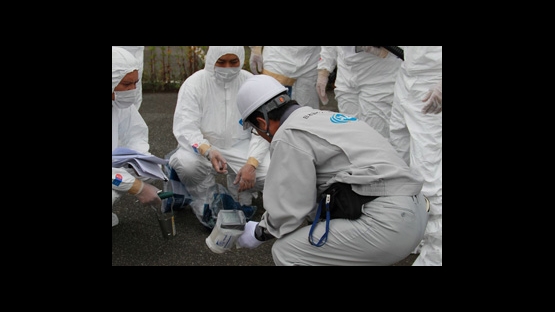An IAEA workshop that helped build the capacity of Asian and Pacific Region countries to prepare for, and respond to, nuclear or radiological emergencies ended in Fukushima Prefecture on 11 October 2013.
More than 20 participants from seven countries strengthened their skills in radiation monitoring and environmental sampling and other related topics during the five-day workshop. Working sessions were held at the IAEA's RANET Capacity Building Centre in Fukushima City and field exercises were performed in those areas of Fukushima Prefecture that remain evacuated following the 2011 accident at TEPCO's Fukushima Daiichi Nuclear Power Station.
Australian, Japanese and Slovenian experts shared their knowledge and experience during the workshop, organized by the IAEA's Incident and Emergency Centre (IEC) as part of its work to strengthen Member States' emergency preparedness and response capabilities. Fukushima Prefecture and the Ministry of Foreign Affairs of Japan Affairs supported the workshop.
"The theoretical and hands-on training that is included in the workshop helped participants improve the emergency and response programmes in their own countries," said Pat Kenny, IAEA RANET Officer and workshop coordinator. "The conditions in the training area afforded the participants an opportunity to learn crucial aspects of emergency preparedness and response work."
The designation ceremony for the IAEA RANET Capacity Building Centre in Fukushima City took place in May 2013. RANET, which stands for Response and Assistance Network, provides a compatible and integrated system for the provision of international assistance is an IAEA framework for international assistance in case of nuclear or radiological emergencies. The network currently comprises 23 Member States.


